Disclosure: Please note that some links are affiliate links, and at no additional cost to you, we earn a commission if you make a purchase.
If you would like to support this website in some way, using these links will help do exactly that.
For our first Holiday Gift Guide this year, we have put together an assortment of gifts that are perfect for feathering your personal wish list, or for the friend or family member who loves to travel. From less than $10 to over $1,000, there’s something for all price points.
Follow Along
If you enjoyed this article, or these topics sound interesting to you, you'll love our weekly newsletter. You'll receive a free Germany Packing list for signing up, and you'll receive each week's newest posts every Friday. Thank you for reading!

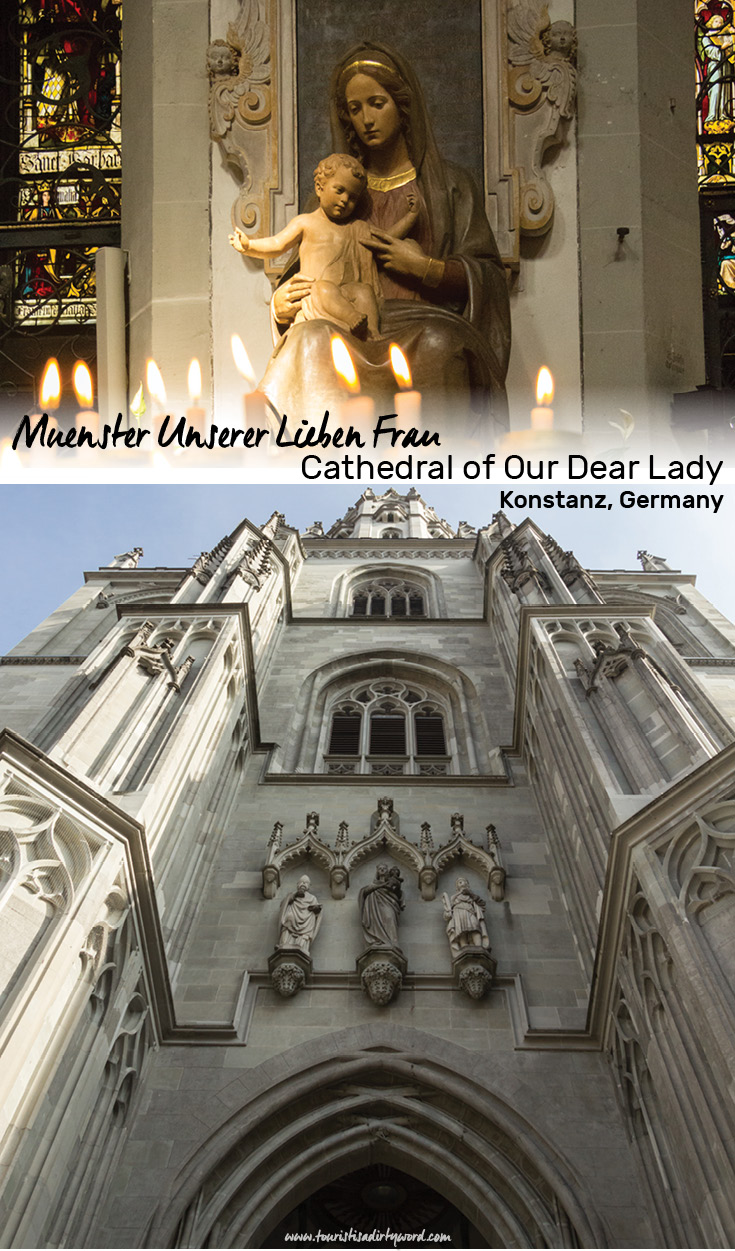
We wandered only a short distance through the old part of town before spotting the highest tower of the Cathedral, then used it as our compass. In Konstanz, Germany, we sought out the Muenster Unserer Lieben Frau, Cathedral of Our Dear Lady. We opened one of the side nave doors, and found ourselves surrounded by tracery windows, and stained glass windows with the afternoon sun shining through them. 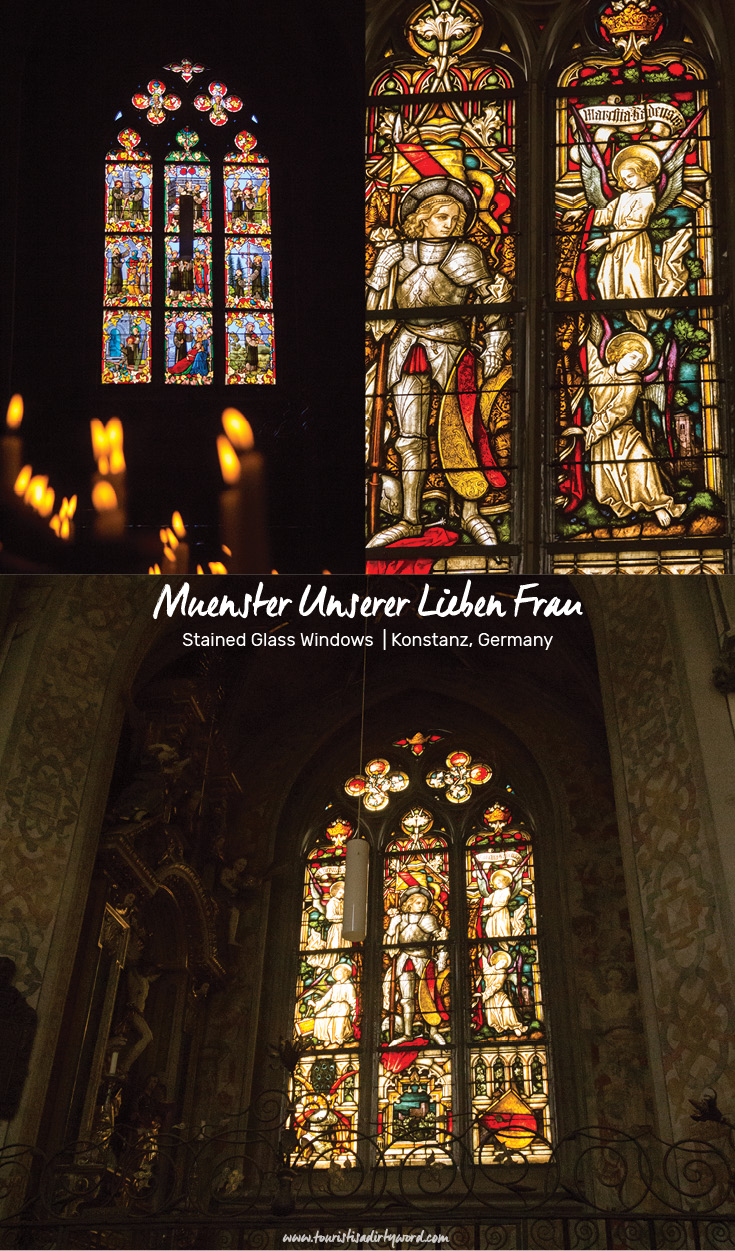
It took a moment for my eyes to adjust, and I took a deep breath. The interior of the cathedral is brighter than I expected, and with almost all church/castle/cathedral/palace.. your eyes tend to wander up. The original Romanesque painted wood ceilings are long gone, but the whitewashed, plastered ribbed vault ceiling is pretty, and does make the Cathedral bright and spacious.
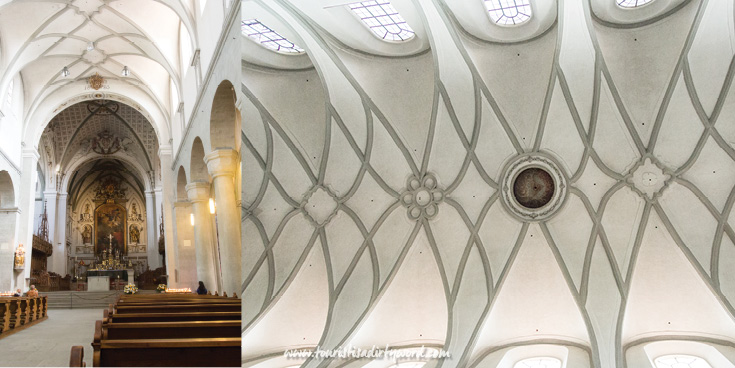
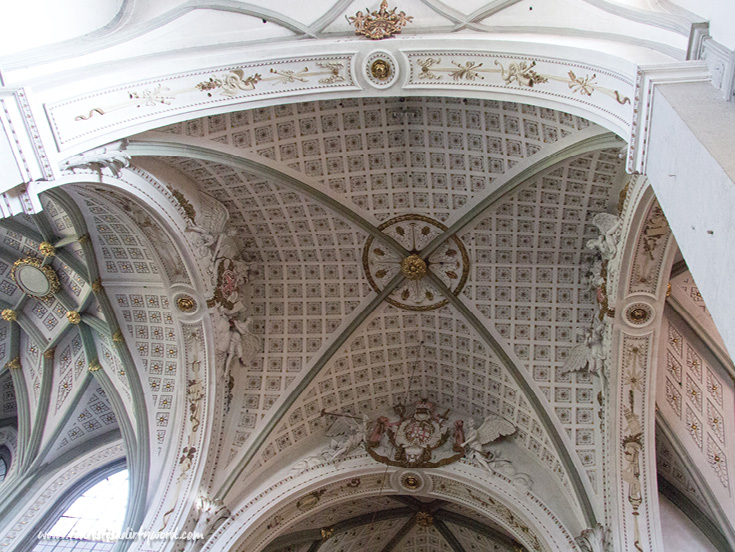
Don't Miss This-
Allow a healthy hour to explore the whole cathedral. There are truly details everywhere, even the crypt. Don't let the word 'crypt' scare you. It felt more like a basement or a cellar, and while it did have low-sloped ceilings, its not cramped. If you venture down, you'll discover three copperplates, one large plate depicting Christ which dates back to the 10th century, and two smaller copper plates from the 13th century. The faceless figure in one of the smaller copper plates depicts the patron saint of Konstanz, Saint Pelagius, whose relics were held for a time in the tomb that is opposite the copperplates.
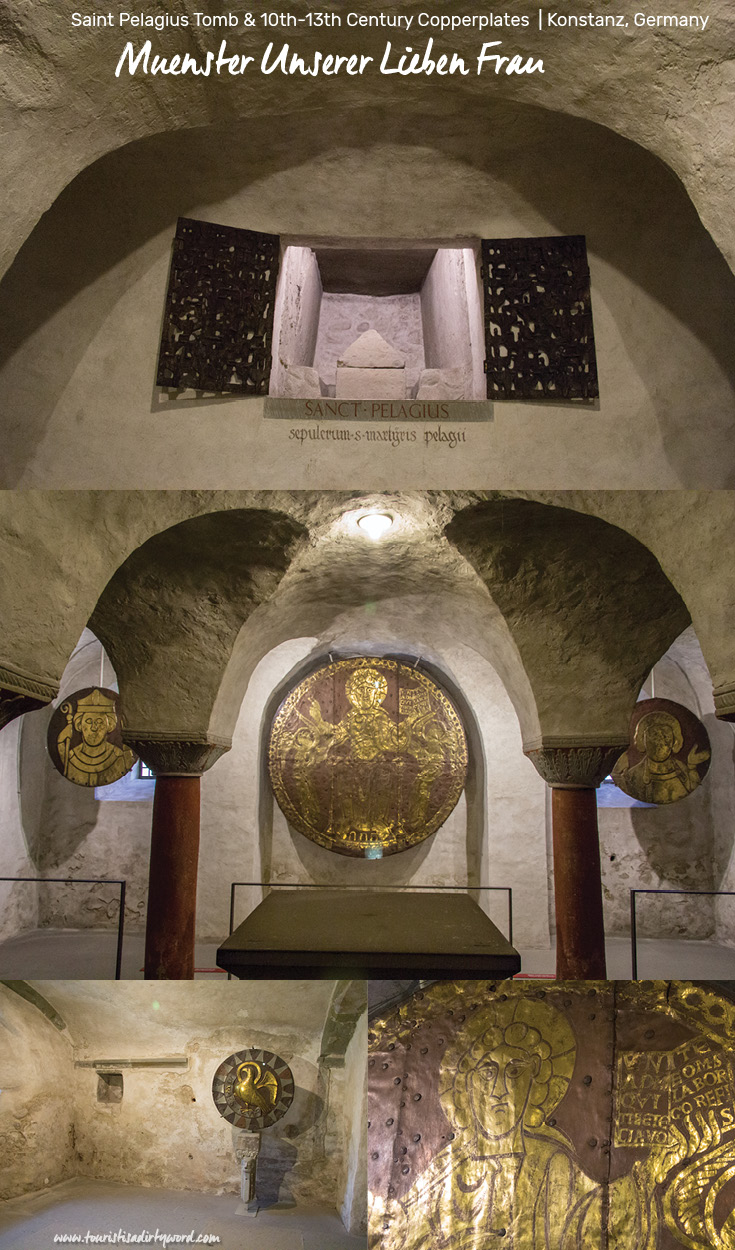
Its hard to beat stained glass windows in wow-factor, but look for the wooden spiral staircase that leads to the pulpit. If you have time, try and plan for hearing the Cathedral bells ring, which are fondly considered by some as one of the most harmonious in Germany.
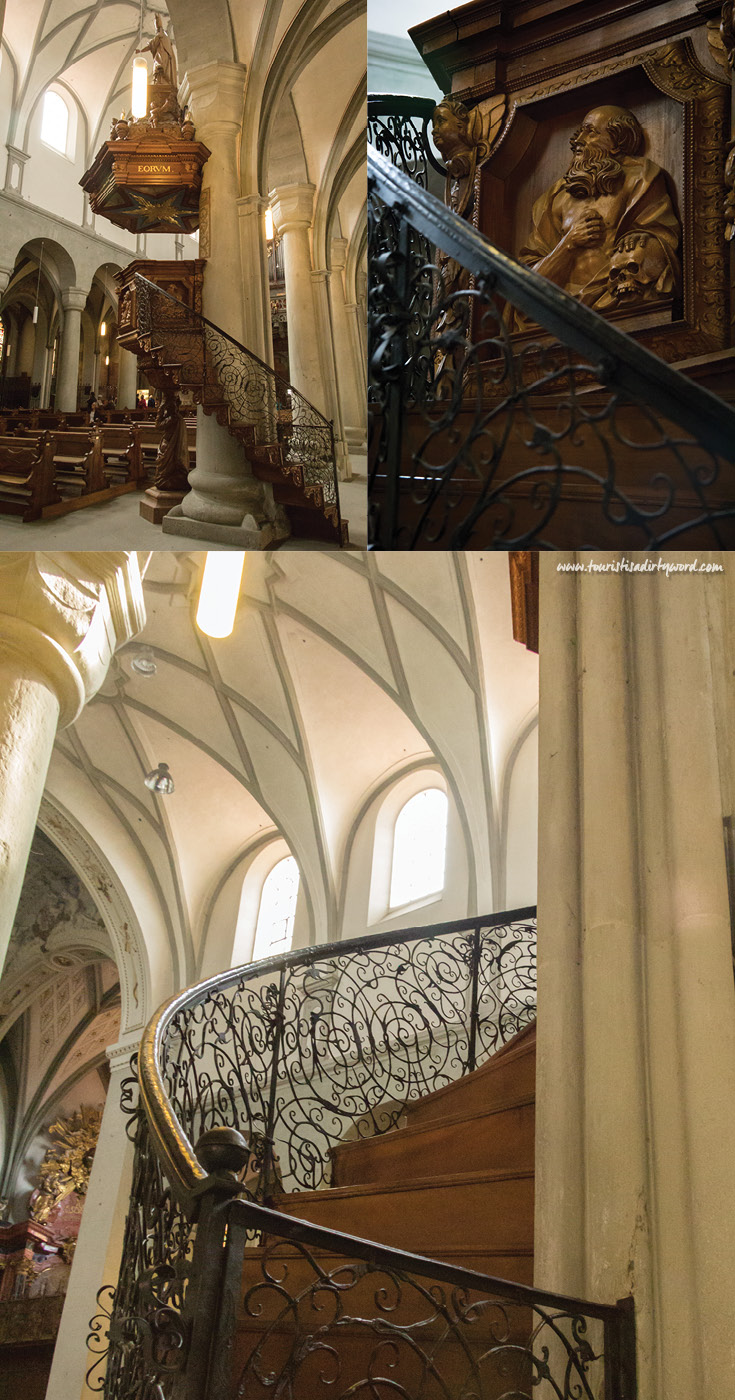
BONUS Konstanz Cathedral Architectural History, in English
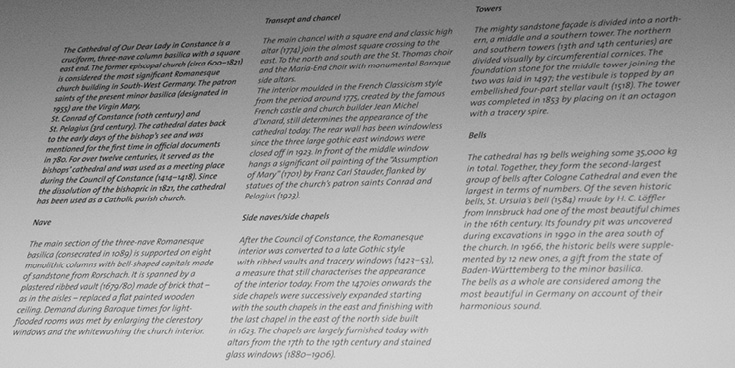
It would be a disservice to try and summarize the English synopsis of the cathedral's history that was on display in the entryway. I've looked online and I can't see it posted anywhere, so I've retyped it from a photo I took. The Wikipedia page for Muenster Unserer Lieben Frau in English is an 1/8th of the size of the page in German, so here's to bridging the language barrier in regards to this stunning building.The official website for the cathedral is completely in German as well.
"Cathedral of Our Dear Lady in Constance is a cruciform, three-nave column basilica with a square east end. The former episcopal church (circa 600-1821) is considered the most significant Romanesque church building in South-West Germany. The patron saints of the present minor basilica (designated in 1955) are the Virgin Mary, St. Conrad of Constance (10th century) and St. Pelagius (3rd century). The cathedral dates back to the early days of the bishop's see and was mentioned for the first time in official documents in 780. For over twelve centuries, it served as the bishops' cathedral and was used as a meeting place during the Council of Constance (1414-1418). Since the dissolution of the bishopric in 1821, the cathedral has been used as a Catholic parish church.
Nave
The main section of the three-nave Romanesque basilica (consecrated in 1089) is supported on eight monolithic columns with bell-shaped capitals made of sandstone from Rorschach. It is spanned by a plastered ribbed vault (1679/80) made of brick that- as in the aisles- replaced a flat painted wooden ceiling. Demand during Baroque times for light-flooded rooms was met by enlarging the clerestory windows and the whitewashing the church interior.
Transept and chancel
The main chancel with a square end and classic high altar (1774) join the almost square crossing to the east. To the north and south are the St. Thomas choir and Maria-End choir with monumental Baroque side altars. The interiors moulded in the French Classicism style from the period around 1775, created by the famous French castle and church builder Jean Michel d'Ixnard, still determines the appearance of the cathedral today. The rear wall has been windowless since the three large gothic east windows were closed off in 1923. In front of the middle window hangs a significant oil painting of the "Assumption of Mary" (1701) by Franz Carl Stauder, flanked by the statues of the church's patron saints Conrad and Pelagius (1923).
Side naves/Side chapels
After the Council of Constance, the Romanesque interior was converted to a late Gothic style with ribbed vaults and tracery windows (1423-53), a measure that still characterizes the appearance of the interior today. From the 1470s onwards the side chapels were successively expanded starting with the south chapels in the east and finishing with the last chapel in the east of the north side built in 1623. The chapels are largely furnished today with the altars from the 17th and 19th century and stained glass windows (1880-1906).
Towers
The mighty sandstone facade is divided into a northern, a middle, and a southern tower. The northern and southern towers (13th and 14th centuries) are divided visually by circumferential cornices. The foundation stone for the middle tower joining the two was laid in 1497; the vestibule is topped by an embellished four-part stellar vault (1518). The tower was completed in 1853 by placing on it an octagon with a tracery spire.
Bells
The cathedral has 19 bells weighing some 35,000 kg in total. Together, they form the second-largest group of bells after Cologne Cathedral and even the largest in terms of numbers. Of the seen historic bells, St. Ursula's bell (1584) made by the H.C. Löffler from Innsbruck had one of the most beautiful chimes in the 16th century. Its foundry pit was uncovered during excavations in 1990 in the area south of the church. In 1966, the historic bells were supplemented by 12 new ones, a gift from the state of Baden-Württenberg to the minor basilica. The bells as a whole are considered among the most beautiful in Germany on account of their harmonious sound."
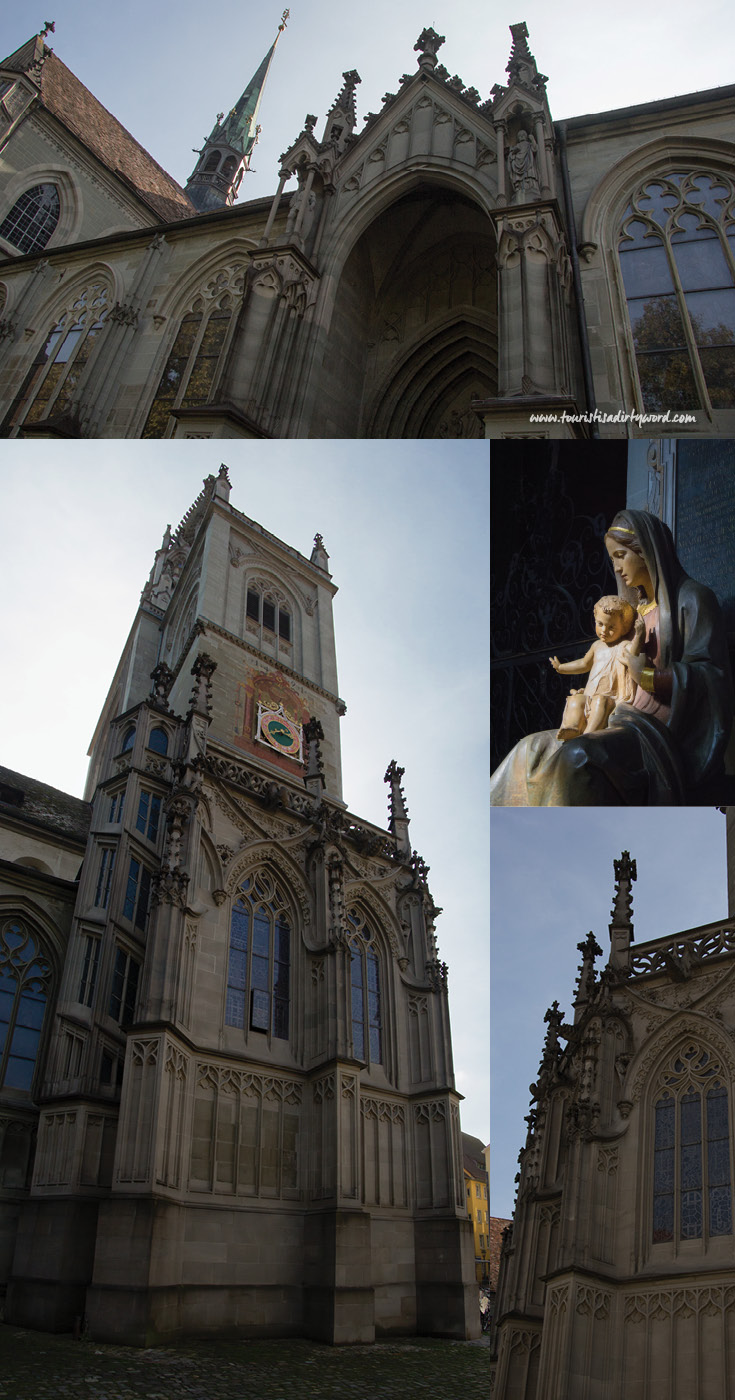
Follow Along
If you enjoyed this article, or these topics sound interesting to you, you'll love our weekly newsletter. You'll receive a free Germany Packing list for signing up, and you'll receive each week's newest posts every Friday. Thank you for reading!

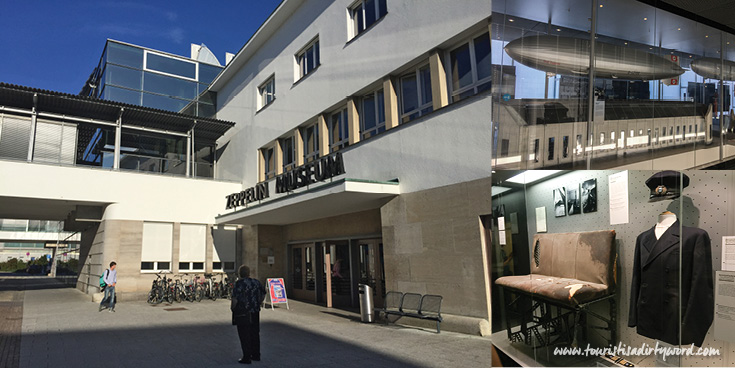
The size of the museum building was intriguing. A classic Bauhaus style building from 1933 enhanced with a large glass annex and three double-doors serving as an entrance. Inside I found myself in the middle of a marble entrance hall with water views of Lake Constance. Just off to the side I spotted a 33 meter long Zeppelin replica. Impressed, I was excited to take a look around.
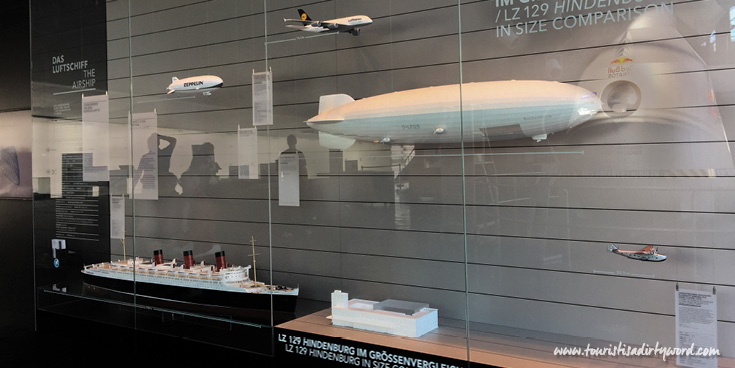
Friedrichshafen is the second-largest city on Lake Constance and owes its present size to partly to the establishment of the Zeppelinwerke, the first Zeppelin factory in 1908. The development of the gigantic airships started in Friedrichshafen, and up to this day many airship related companies have remained faithful to this city, which ultimately resulted in the creation of the Zeppelin Museum. After the acquisition of the harbor station by the city of Friedrichshafen, architects and museum specialists, the museum opened in 1996.
After purchasing the admission tickets, we entered the first room, showcasing the history of the Hindenburg airship and Graf Zeppelin. Above our heads was the gigantic looking exterior hull of the Zeppelin replica. I began to understand my family’s fascination in the stories of these huge airships.
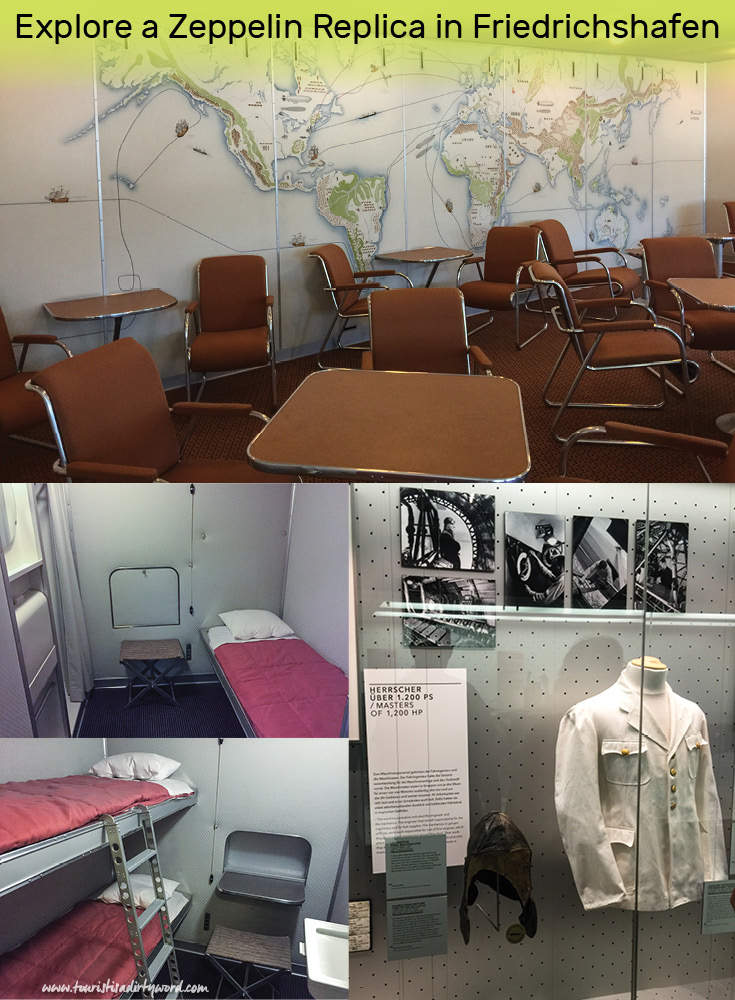
I was itching to get up into the Zeppelin replica. We walked up a staircase and crossed a small aluminum bridge into a corridor, which led us to see two guest rooms and one larger lobby room. The guest rooms were very tight, however the illusion of the reproduction was perfect. It felt like you were aboard an airship and could run into someone very rich and/or famous at any time, who were the only people that could afford such a trip.
Several glass cases displayed crew uniforms, food menus and items like a compass or maps, which were used to navigate this big balloon.
Our next stops were in the light-filled and more modern-themed history rooms, where there was more to discover. We found ballast containers, gearboxes, coins, tin toys, newspaper clippings and even original porcelain pieces with the name Hindenburg engraved on them. Passengers that booked such a trip did not eat from ordinary white plates. There were also corner displays with iPads showing 3D models of the different artifacts.
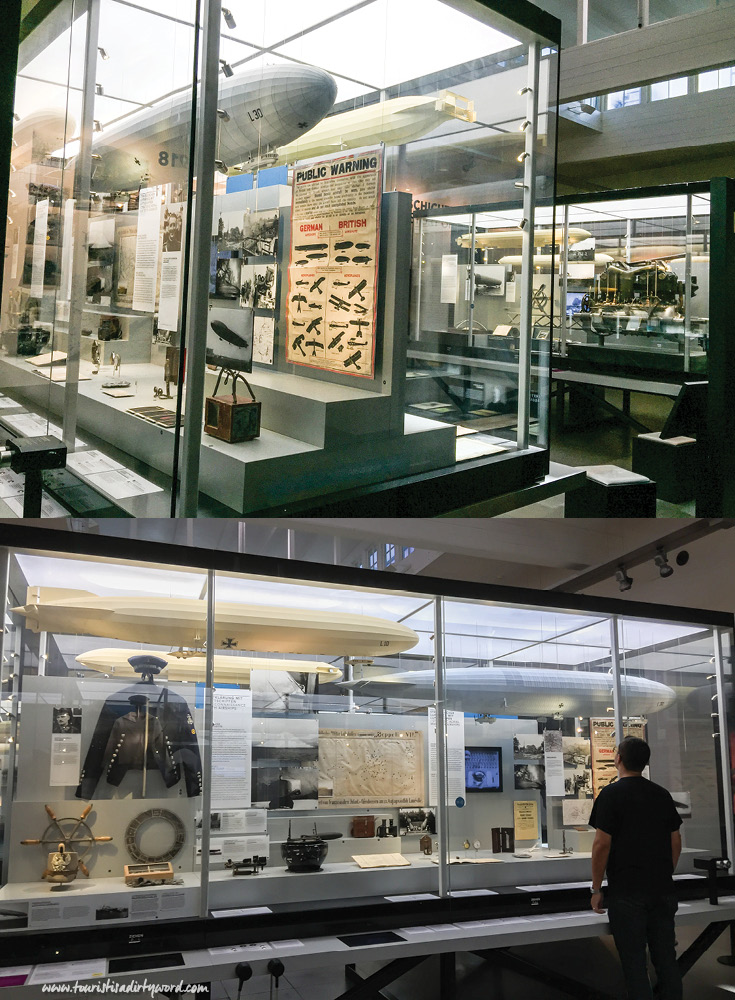
Another part of the exhibit halls revisits the use of airships in WWI and as American aircraft carriers. It felt like we were looking at Zeppelin-themed treasures, collected from all corners of the earth.
After spending most of our time on the second floor looking at all the knick-knacks and historic timepieces, we went up to the third floor. It was dedicated to Count Ferdinand von Zeppelin, who was an art lover. There is really no relation to the airships on this floor, and save a few pieces that Denise liked, we left disappointed after about ten minutes. To be honest, when we first arrived on the third floor we thought we were lost. This is a section you can skip if you’re tight on time. Do however make sure to take the time to appreciate the architecture of the building from the outside and inside and spend time on the second floor exploring all the artifacts in the glass showcases.
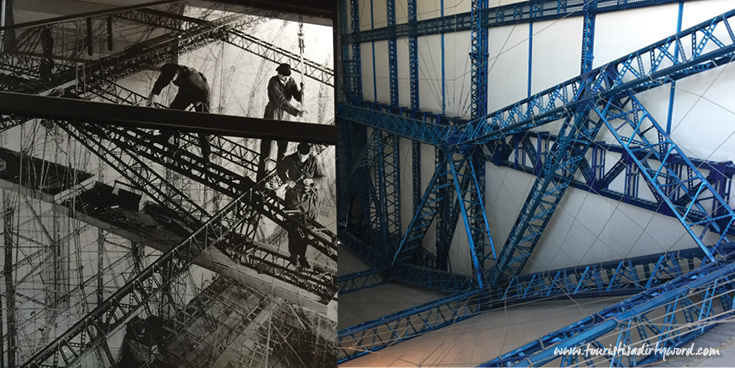
Follow Along
If you enjoyed this article, or these topics sound interesting to you, you'll love our weekly newsletter. You'll receive a free Germany Packing list for signing up, and you'll receive each week's newest posts every Friday. Thank you for reading!

